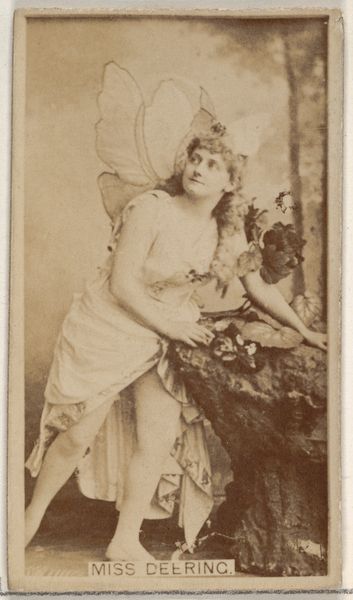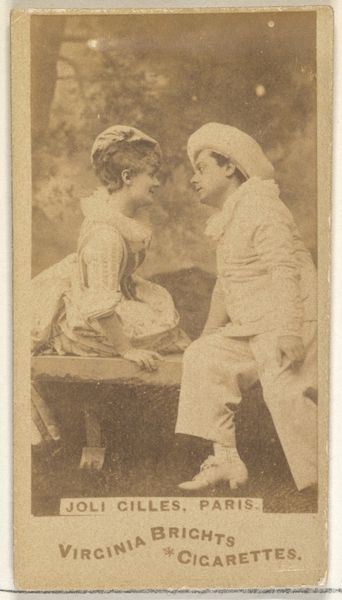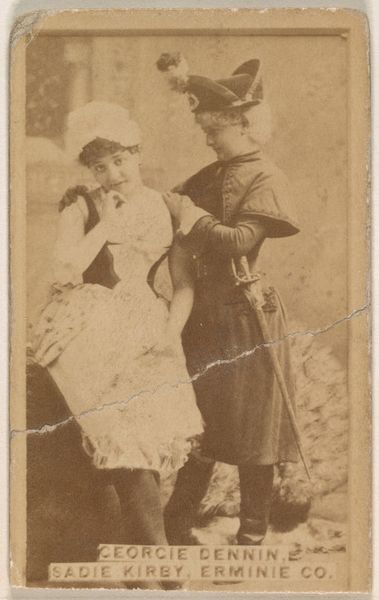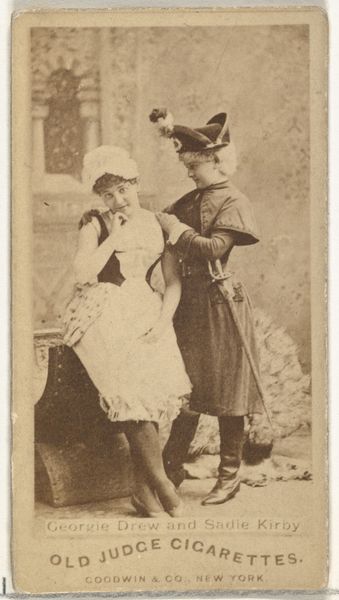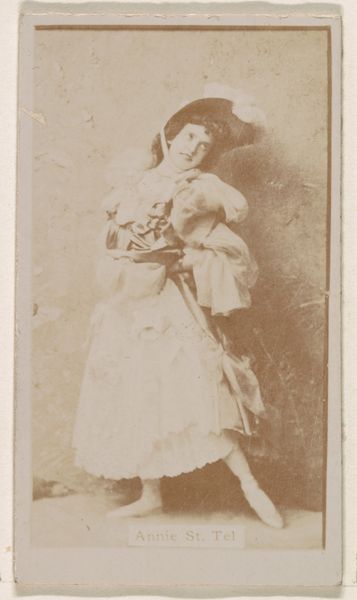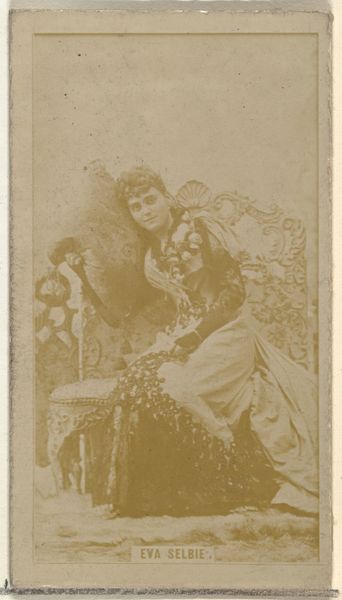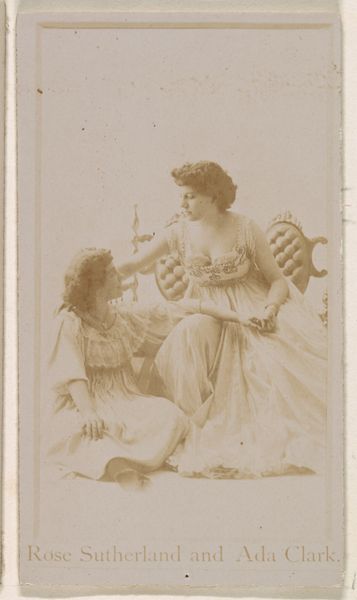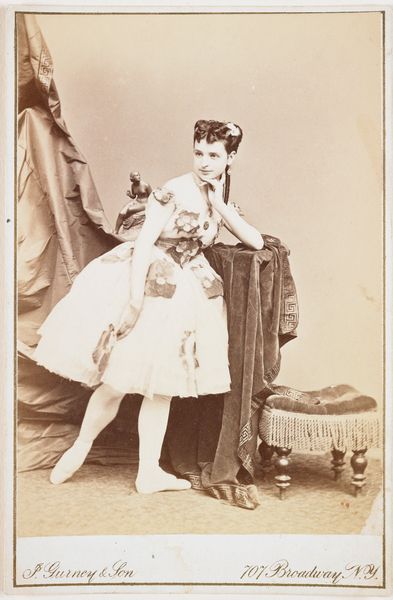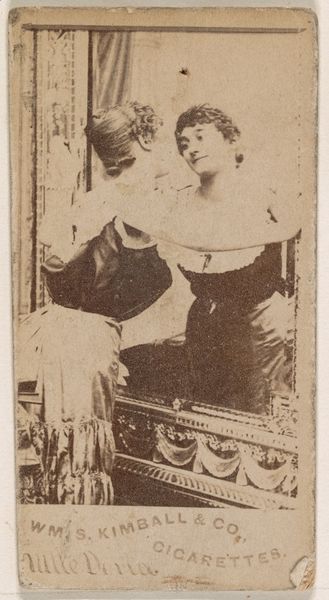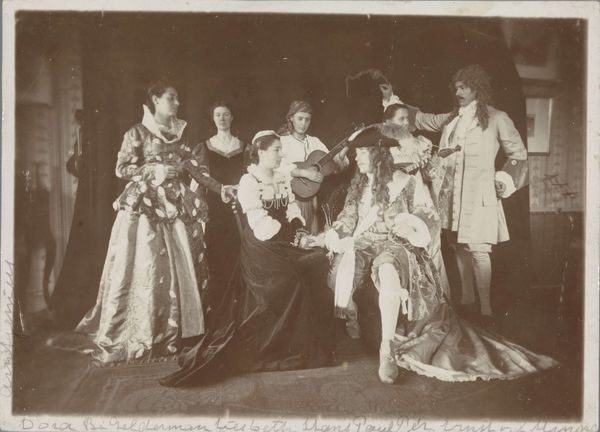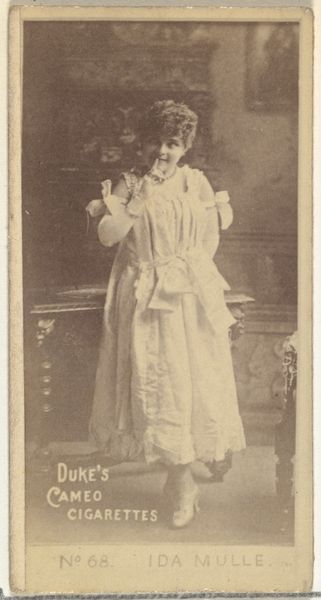
Dimensions: height 179 mm, width 129 mm
Copyright: Rijks Museum: Open Domain
Curator: What a delightfully ambiguous photograph. We're looking at "Perrone en Ernst v/d Minne" by Willem Witsen. This piece, held at the Rijksmuseum, dates from somewhere between 1860 and 1915. It's photography presented in a romantic style. What leaps out at you? Editor: The first thing that strikes me is the dreamlike quality—or maybe slightly nightmarish. It’s faded, almost spectral. Like a memory, but one that's trying too hard to be "period appropriate." The lighting has that theatrical, posed feeling. It has this ghostly atmosphere I can’t shake. Curator: You’ve zeroed in on something quite interesting. The title, literally translated as “Peronne and Ernst of Love," hints at a genre painting, perhaps a depiction of courtly love or a staged romantic tableau. Notice the costume-like attire. Witsen seems preoccupied with visual historical codes and the performative aspect of the setting, especially concerning themes of romantic or sentimental love. Editor: Exactly. Those clothes feel like…symbols. The woman, serenading with her instrument, maybe it’s supposed to signify devotion or the "sweetness" of courtship. The man—stiff as a board! I feel that stiffness embodies some notion about honor. There is also a subtle contrast: he is rigid; she is flowing. Perhaps even passion versus social expectations? Curator: Good eye! The attire has this kind of allegorical implication that speaks to cultural memory. It uses symbolism. And speaking of expectations, the fact that they are posed on some platform with trailing skirts looks staged. This isn't snapshot realism; it’s an invented, deliberately artificial moment. Editor: Which kind of backfires. It’s supposed to represent the tenderness of courtship, maybe the beauty of musical expression…but something’s off, creating a feeling of disconnection rather than a believable romance. Maybe he should crack a smile or something! Curator: The disconnection may point to how Witsen uses photography less to replicate the ‘real’ and more to question representation itself. The photograph creates something akin to looking into the distant past. Perhaps there are subtle ways the artist questions themes associated with Romanticism through this image? Editor: Perhaps, that artificiality is an active component. Anyway, my sense of uneasiness hasn’t diminished one bit, which might be something in its favour! Curator: An aptly articulated ending point; it seems we may need further ruminations on our initial impressions here in the galleries later!
Comments
No comments
Be the first to comment and join the conversation on the ultimate creative platform.

